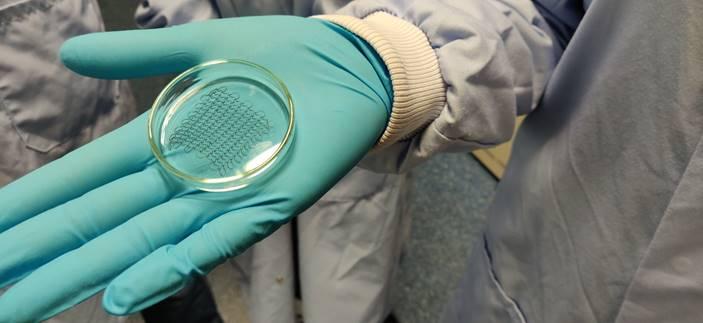
Described in Advanced Functional Materials, the patch can endure the physical demands and replicate the electrical signalling that enables our hearts to pump blood rhythmically. It’s hoped the advance could help mitigate the effects of heart disease, which is the leading cause of death globally. According to the researchers, one in six men and one in seven women in the EU will suffer a heart attack at some point in their lives.
Scientists create 3D printed heart using patient cells
Soft artificial heart completes initial trials in Swiss project
"Despite some advances in the field, heart disease still places a huge burden on our healthcare systems and the life quality of patients worldwide,” said senior author Michael Monaghan, assistant professor in biomedical engineering at Trinity. “It affects all of us either directly or indirectly through family and friends. As a result, researchers are continuously looking to develop new treatments which can include stem cell treatments, biomaterial gel injections and assistive devices."
The patches were manufactured using melt electrowriting (MEW). MEW combines an electrical field with additive technologies, allowing liquid polymers to be deposited with control that facilitates the printing of complex architectures. Using this method, the Trinity team was able to make a patch that could control its expansion in multiple directions, mimicking heart tissue, or myocardium. To replicate the electrical conductivity of heart muscle, the patches were then coated with the electroconductive polymer polypyrrole.
"Ours is one of few studies that looks at a traditional material, and through effective design allows us to mimic the direction-dependent mechanical movement of the heart, which can be sustained repeatably,” Monaghan said.
"The bulk material is currently approved for medical device use, the design accommodates the movement of the pumping heart, and has been functionalised to accommodate signalling between isolated contractile tissues.
"We are now looking forward to furthering the next generation of designs and materials with the eventual aim of applying this patch as a therapy for a heart attack."




Collaboration to address viable solutions for VAWG database
<blockquote>address the lack of standardisation, coordination, and collaboration of gender disaggregated data intelligence across various regions,...